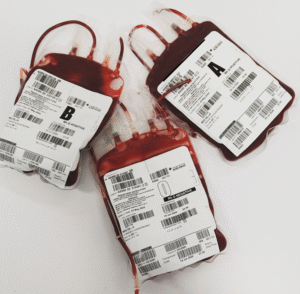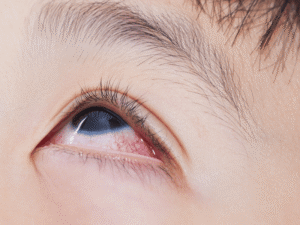What is a Common Cold?
A common cold is an upper respiratory infection that affects the nose, throat, sinuses, and windpipe (trachea). It’s caused by over 200 different viruses, with rhinovirus being the most common.
While it’s called a “common” cold because of how widespread it is, a cold can be far from ordinary, especially when it lingers longer than usual. Adults typically get 2 to 3 colds a year, while children may catch 4 or more annually.
Table of Contents
Overview: Chronic Cold
The common cold is one of the most frequent illnesses we face, but when its symptoms linger longer than expected, it can develop into a chronic cold. A cold that sticks around can leave you feeling frustrated, tired, and miserable.
Symptoms and Causes of a Chronic Cold
Early Stage: Days 1 to 3
A typical cold starts with a sore throat, runny nose, and a mild cough. You might also experience a tickling sensation in your throat and frequent sneezing. While the symptoms are usually mild, they can feel uncomfortable.
Active Stage: Days 4 to 7
By the fourth day, your symptoms may become more intense. Common symptoms in this stage include:
Body aches
Fatigue
Runny eyes and nose
Headaches
Fever (more common in children)
The cold virus is most contagious during this period, making it crucial to rest and stay hydrated to recover faster.
Late Stage: Days 8 to 10
By the eighth day, many cold symptoms begin to subside, but you might still experience stuffy nose or a nagging cough. These lingering symptoms can last up to two months in some cases. However, if your symptoms worsen, or if the fever returns, this could indicate a secondary infection, like bronchitis or sinusitis.
Common Cold vs. Flu – What's the Difference?
Both cold and flu symptoms are similar, but the flu tends to be more severe. The flu causes higher fevers, body aches, and extreme fatigue, whereas the common cold is milder with less intense symptoms.
If you have fever and body aches, it’s more likely the flu. However, colds can sometimes turn into a chest cold or bronchitis, which can worsen and feel more like the flu.
What Causes a Chronic Cold?
The rhinovirus is the leading cause of the common cold, but chronic cold symptoms may suggest that your body is fighting a lingering infection or has developed a secondary condition like sinusitis. Factors such as a weakened immune system, ongoing exposure to cold air, or an underlying respiratory condition (e.g., asthma) can cause a cold to last longer than normal.
Why Do Some Colds Last Longer?
Weak immune system: If your immune defenses are compromised, the body may struggle to fight off the virus effectively.
Secondary infections: Bacterial infections, such as ear infections or sinusitis, can develop after a cold and prolong symptoms.
Environmental factors: Cold or dry air can worsen cold symptoms and make recovery take longer.
Cold Symptoms in Babies
When babies catch a cold, symptoms may be similar to those in adults but can be harder to manage. Look for:
Runny nose (which may change color)
Sneezing
Fever (usually between 101-102°F)
Loss of appetite
Increased drooling (due to a sore throat)
How Long Does a Chronic Cold Last?
While most colds go away in 7 to 10 days, a chronic cold lasts longer. If your cold lasts more than two weeks or symptoms worsen, it’s time to consult a healthcare provider.
Treatment for a Chronic Cold
Although there’s no cure for the common cold, several treatment options can help alleviate symptoms and speed up recovery.
Over-the-Counter (OTC) Medications
Pain relievers like Tylenol or Advil can reduce fever and ease body aches.
Decongestants such as Sudafed help relieve a stuffy nose.
Cough suppressants like Dextromethorphan (Robitussin) can help calm persistent coughs.
Home Remedies
Zinc and Vitamin C: While these can’t prevent colds, they may reduce the severity or shorten the duration of the illness.
Saline drops or sprays: Effective in clearing mucus from the nose, especially for babies.
Humidifiers: Keep the air moist to relieve nasal congestion.
Hydration and Rest
Drinking plenty of fluids, like warm tea or water, and getting ample sleep are essential for fighting off the cold.
How to Prevent Colds
Prevention is the key to avoiding the misery of a cold. Here are some essential tips:
Wash your hands regularly: Wash thoroughly before meals, after sneezing, or after touching public surfaces.
Avoid touching your face: Cold viruses spread when they enter your body through the eyes, nose, or mouth.
Disinfect surfaces: Cold viruses can survive on surfaces for hours.
Boost your immune system: A healthy diet, regular exercise, and good sleep habits strengthen your immune system.
For babies, the most effective preventive measure is frequent handwashing and minimizing contact with sick individuals.
When to See a Doctor
Although most colds resolve on their own, there are times when medical help is necessary:
High fever lasting more than 3 days
Chest pain or trouble breathing
Persistent or worsening symptoms beyond 10 days
For babies, any signs of difficulty eating, extreme lethargy, or wheezing require immediate attention.
Conclusion
While a chronic cold can be frustrating, understanding its symptoms, causes, and treatment options helps you manage it better. Early treatment, staying hydrated, and getting rest are vital for a speedy recovery. If your symptoms persist or worsen, always consult with a healthcare provider to rule out other conditions.
Remember, by practicing good hygiene and immune-boosting habits, you can reduce the chances of catching a cold and minimize its duration when you do get sick.



